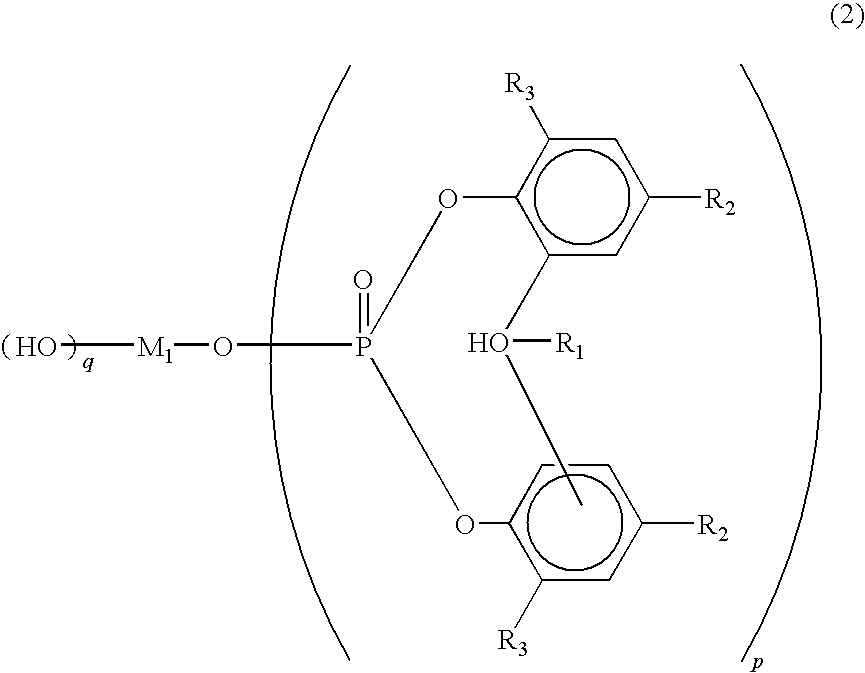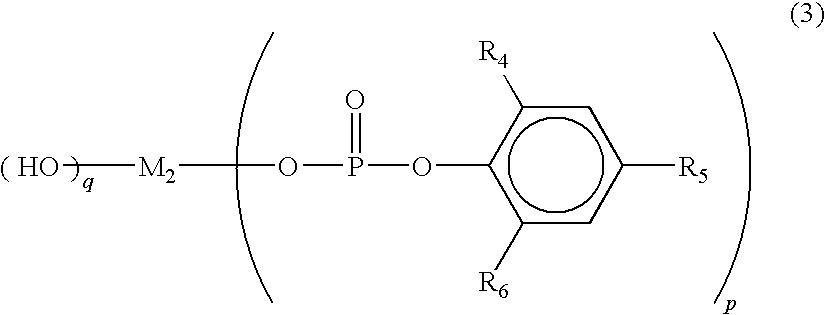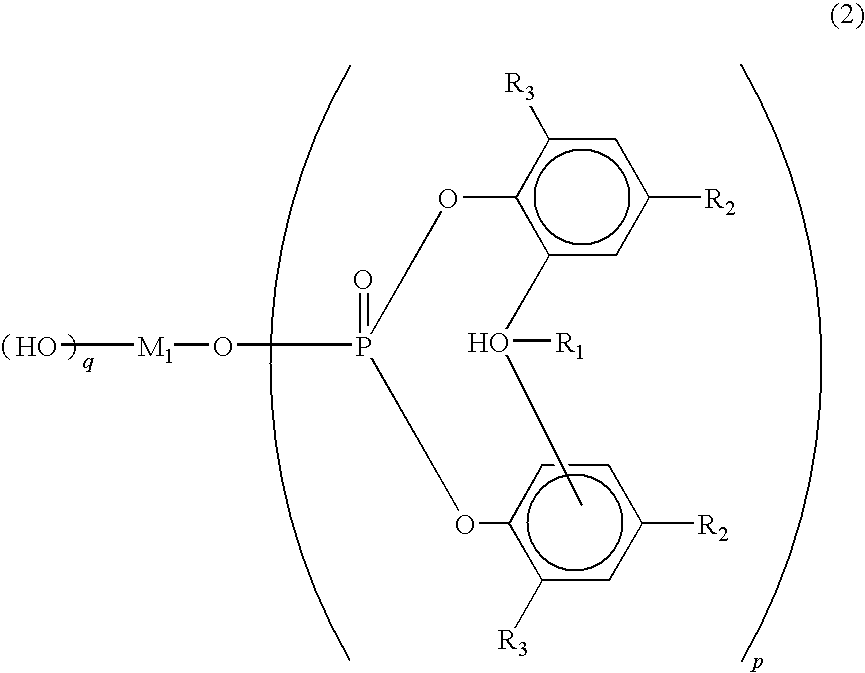Polylactic acid composition
a technology of polylactic acid and composition, which is applied in the direction of organic insulators, plastic/resin/waxes insulators, dyeing process, etc., can solve the problems of low crystallization rate of polylactic acid, limited use of polylactic acid as a molded article obtained by crystallization, and long time for injection molding of polylactic acid, etc., to achieve excellent moldability and mechanical strength, excellent crystallinity, excellent appearance and color
- Summary
- Abstract
- Description
- Claims
- Application Information
AI Technical Summary
Benefits of technology
Problems solved by technology
Method used
Image
Examples
synthesis example 1
Synthesis of L-Polylactic Acid by Melt Ring-Opening Polymerization of L-Lactide
[0268]After the inside of a vertical stirring tank (40 liters) equipped with a full-zone blade, vacuum pipe, nitrogen gas pipe, catalyst, L-lactide solution introduction pipe and alcohol initiator introduction pipe was substituted by nitrogen, 30 kg of L-lactide having an optical purity of 99%, 0.69 g (0.023 mol / kg-LD) of stearyl alcohol and 6.14 g (5.05×10−4 mol / l kg-LD) of tin octylate were charged into the tank and heated at 150° C. under a nitrogen pressure of 106.4 kPa. When the contents were dissolved, stirring was started and the inside temperature was further raised to 190° C. Since a reaction starts when the inside temperature exceeds 180° C., cooling was started to maintain the inside temperature at 185 to 190° C. to continue the reaction for 2 hours.
[0269]Then, the inside pressure was increased from 2 atm. to 5 atm. and the contents were supplied into a stirring tank equipped with a max blendin...
synthesis example 2
Synthesis of D-Polylactic Acid by Melt Ring-Opening Polymerization of D-Lactide
[0271]The operation of Synthesis Example 1 was repeated except that D-lactide having an optical purity of 99% was used to synthesize poly(D-lactic acid) having a weight average molecular weight of 155,000, a molecular weight dispersion of 1.7 and a lactide content of 0.005 wt %.
(2) Carbodiimide (B)
[0272]B-1: Carbodilite LA-1 having an isocyanate group content of 1.5 wt % and a carbodiimide equivalent of 247, manufactured by Nisshinbo Industries, Inc.
B-2: Carbodilite HMV-8CA having a carbodiimide equivalent of 293, manufactured by Nisshinbo Industries, Inc.
B-3: polycarbodiimide having an isocyanate group content of 1.5 wt % and a carbodiimide equivalent of 214, obtained in Synthesis Example 3
B-4: polycarbodiimide having an isocyanate group content of 1.7 wt % and a carbodiimide equivalent of 244, obtained in Synthesis Example 4
synthesis example 3
Synthesis of Polycarbodiimide
[0273]The following polycarbodiimide was synthesized in accordance with the synthesis example of a carbodiimide compound described in JP-A 11-80522. That is, 590 parts by weight of 4,4′-dicyclohexylmethane diisocyanate, 62.6 parts by weight of cyclohexyl isocyanate and 6.12 parts by weight of 3-methyl-1-phenyl-2-phosphorene-1-oxide as a carbodimidation catalyst were reacted with one another at 180° C. for 48 hours to obtain poly(4,4′-dicyclohexylcarbodiimide) having a polymerization degree of 10.
PUM
| Property | Measurement | Unit |
|---|---|---|
| optical purity | aaaaa | aaaaa |
| temperature | aaaaa | aaaaa |
| melting point | aaaaa | aaaaa |
Abstract
Description
Claims
Application Information
 Login to View More
Login to View More - R&D
- Intellectual Property
- Life Sciences
- Materials
- Tech Scout
- Unparalleled Data Quality
- Higher Quality Content
- 60% Fewer Hallucinations
Browse by: Latest US Patents, China's latest patents, Technical Efficacy Thesaurus, Application Domain, Technology Topic, Popular Technical Reports.
© 2025 PatSnap. All rights reserved.Legal|Privacy policy|Modern Slavery Act Transparency Statement|Sitemap|About US| Contact US: help@patsnap.com



